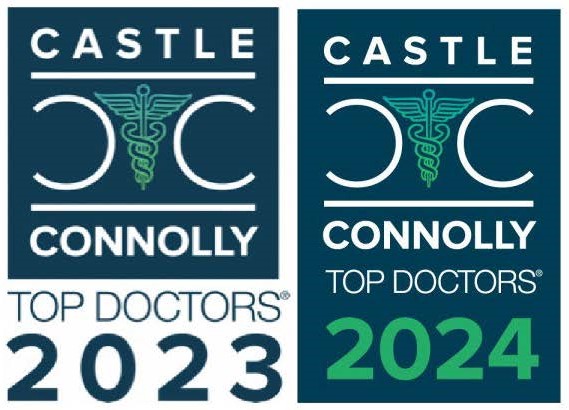
Esketamine (Spravato) nasal spray offers a breakthrough for those battling treatment-resistant depression. Studies show nearly 77% of patients using esketamine with an oral antidepressant experience significant symptom relief, often within hours. For many, it’s a fast-acting solution that’s making a real difference.
What Does the Study on Esketamine (Spravato) Nasal Spray Reveal About Its Effectiveness?
A recent study on esketamine nasal spray (ESK) reveals valuable insights into its effectiveness for adults with treatment-resistant depression (TRD). Researchers compared esketamine combined with a new oral antidepressant (OAD) to an OAD paired with a placebo nasal spray (PBO).
Findings indicate significant effects of esketamine on reducing depressive symptom severity. Results also highlight a strong correlation between scores on the Montgomery–Åsberg Depression Rating Scale (MADRS) and the 9-item Patient Health Questionnaire (PHQ-9).
How Was the Study Conducted?
This analysis focused on data from three studies. TRANSFORM-1, TRANSFORM-2, and SUSTAIN-1. The TRANSFORM studies were randomized and active-controlled, examining the impact of esketamine on depression in TRD patients over a four-week period. SUSTAIN-1 focused on relapse prevention in patients who had achieved stable response or remission. These combined datasets allowed researchers to evaluate both short-term efficacy and long-term remission potential, providing a well-rounded view of esketamine’s impact.
What Were the Initial Depression Levels Among Participants?
Participants began the study with severe depression, as measured by the PHQ-9 scale. Mean scores were 20.4 for the esketamine plus OAD group. For the placebo plus OAD group, scores were similar at 20.6. Scores in this range indicate severe depression, marking substantial mental health challenges. High baseline emphasizes the potential impact of esketamine on patients unresponsive to conventional treatments.
What Changes Were Observed in Depression Scores?
After 28 days, the difference in outcomes between the two groups was noteworthy:
- PHQ-9 Score Reduction: Patients receiving esketamine plus OAD showed a mean reduction in PHQ-9 scores of 12.8 points. Those in the placebo group experienced a mean reduction of 10.3 points. Esketamine had a statistically significant impact on reducing depressive symptoms. Results showed a clear difference beyond what was achieved with OAD alone (P < .001).
- Clinically Meaningful Improvement: The study also tracked how many participants achieved a clinically significant reduction in PHQ-9 scores (defined as a decrease of at least six points). In the esketamine group, 77.1% of participants reached this threshold, compared to 64% in the placebo group (P < .001). This substantial difference points to esketamine’s ability to facilitate greater symptom relief for a majority of patients.
Did Esketamine Promote Remission?
One of the most compelling aspects of esketamine’s effectiveness lies in its ability to support long-term remission. In the SUSTAIN-1 study, which observed patients over a maintenance period, 57.3% of those receiving esketamine plus OAD retained their remission status (defined as a PHQ-9 score of 4 or less) at the end of the maintenance period. By contrast, only 44.2% of those in the placebo group maintained remission (P = .044). This finding suggests that esketamine not only reduces symptom severity but also helps sustain these improvements, offering hope for sustained relief.
How Did Esketamine Affect the Relationship Between PHQ-9 and MADRS?
The study explored the relationship between the self-reported PHQ-9 scores and clinician-rated MADRS scores over time. While both scales assess depressive symptoms, they focus on different aspects. The PHQ-9 is a self-assessment tool that captures the patient’s perception of their depression. While the MADRS is a clinical tool rated by professionals.
A notable finding from the study was the nonlinear but growing correlation between these scores throughout the treatment period. Increased alignment suggests esketamine harmonizes patients’ perception of their symptoms with clinical evaluations. Alignment like this offers a dual-layered validation of symptom reduction.
What Implications Do These Findings Have for Treatment-Resistant Depression?
Esketamine’s impact on depressive symptom severity provides a promising alternative for individuals with TRD. Many patients with TRD have often exhausted several conventional antidepressants. Typically SSRIs or SNRIs, without achieve meaningful relief. Esketamine’s unique mechanism of action on NMDA receptors and its rapid onset provides a new avenue for treatment.
- Fast-Acting Relief: Antidepressants often take weeks to show full effects. Esketamine, however, works differently. Its impact can be felt within hours or days, bringing faster relief to those in acute distress.
- Higher Remission Rates: Esketamine shows a higher likelihood of achieving and sustaining remission compared to placebo. Remission rates in the esketamine group consistently surpass those in the placebo group. For individuals with TRD, this potential for lasting relief can greatly improve quality of life.
- Reduced Symptom Severity: For many patients, partial relief isn’t enough. The significant reductions in PHQ-9 and MADRS scores indicate that esketamine may offer deeper relief than standard treatments alone.
Are There Any Limitations to Consider?
While the study’s findings are promising, it’s important to note several limitations:
- Short Study Duration: The four-week duration of the TRANSFORM studies provides initial insight but may not capture the full range of long-term outcomes. This is partially addressed by SUSTAIN-1. Further long-term studies would be beneficial.
- Side Effects: Esketamine is administered under medical supervision due to potential side effects, including dissociation, dizziness, and nausea. These side effects may make it unsuitable for some patients.
- Cost and Accessibility: Esketamine treatment must be administered under medical supervision. Higher costs compared to traditional oral antidepressants may limit its accessibility for some patients.
How Does Esketamine (Spravato) Work Differently Than Other Antidepressants?
Esketamine (Spravato) targets the brain’s NMDA (N-methyl-D-aspartate) receptors, setting it apart from traditional antidepressants. These receptors are linked to glutamate, an excitatory neurotransmitter critical for brain function, mood, and cognition. Glutamate influences numerous cognitive and emotional processes.
Unlike SSRIs (Selective Serotonin Reuptake Inhibitors), which primarily increase serotonin levels, esketamine follows a distinct pathway. This unique mechanism offers hope for those with treatment-resistant depression (TRD). Many patients who have not responded to conventional treatments find new possibilities through esketamine therapy.
- Rapid Onset of Action: Esketamine often begins working within hours. According to studies, significant symptom reduction can be observed within 24 hours for many individuals but it is common for it to take 4 weeks before symptom reduction begins, which can be life-changing for those facing severe depression.
- Targeting Different Pathways: Esketamine is an NMDA receptor antagonist. Blocking these receptors can affect the brain’s glutamate system, believed to contribute directly to mood regulation. This action can help foster synaptic plasticity—essentially “re-wiring” pathways in the brain to improve resilience against depressive symptoms.
- Effectiveness for TRD: Esketamine is specifically indicated for adults with TRD, a group that does not respond to at least two other types of antidepressants. An estimated 30% of those with major depression are considered treatment-resistant. And for them, esketamine may offer a viable new treatment path.
- Improving Cognitive Symptoms: Many patients with TRD report cognitive challenges. Esketamine’s influence on glutamate may support cognitive improvements, addressing symptoms like concentration difficulties and memory issues often seen in TRD.
Could Esketamine (Spravato) Nasal Spray Be the Right Choice for You?
Before considering esketamine, several factors should be weighed:
- Previous Treatment History: Esketamine is typically recommended for individuals who haven’t responded to at least two different antidepressants.
- Severity of Depression: Esketamine offers rapid effects, often noticeable within hours or days. Those with severe or persistent symptoms may gain significant relief from this faster-acting treatment.
- Side Effects and Supervision: Esketamine is administered under medical supervision due to possible side effects like dizziness, dissociation, and nausea. It’s important to feel comfortable with this supervised setting.
- Cost and Accessibility: This treatment can be expensive and involves clinic visits for every dose. Many patients may find this requirement limits accessibility. Fortunately, most insurance plans cover it, making this innovative option more feasible for those with treatment-resistant depression.
- Overall Health: Health conditions or medications can influence how esketamine interacts with your body. A thorough understanding of these factors is necessary for safe treatment.
How Does TMS Complement Esketamine (Spravato) in Treating Depression?
Transcranial Magnetic Stimulation (TMS) provides a medication-free alternative for depression treatment. Often paired with esketamine, it’s especially beneficial for individuals with treatment-resistant depression (TRD). Magnetic pulses from TMS target areas of the brain linked to mood regulation. Stimulating the prefrontal cortex can boost brain activity and help ease depressive symptoms.
Here’s how TMS can work alongside esketamine effectively:
- Non-Invasive and Med-Free: TMS involves no medications. Side effects are also minimal. An ideal choice for those seeking an alternative or complement to treatments like esketamine.
- Enhanced Efficacy in Treatment-Resistant Depression: TMS alone has proven effective in treating TRD, as shown in studies. When combined with esketamine, it creates a powerful multi-modal approach.
- Sustained Relief and Neuroplasticity: While esketamine offers rapid relief, TMS promotes long-term changes in brain activity. Repeated sessions can support neuroplasticity—strengthening and stabilizing neural pathways that contribute to mood improvement. TMS serves as an excellent maintenance tool post-esketamine treatment, helping to sustain remission.
- Reduced Medication Dependency: Many people seek ways to minimize long-term medication use. TMS provides an option to manage depressive symptoms without complete reliance on medications. Reducing dependence can alleviate concerns about esketamine’s potential side effects. Therapeutic benefits are maintained while minimizing risks.
See What We Can Do for You
The TMS Institute of Arizona offers effective, science-backed treatments for those struggling with treatment-resistant depression.
With therapies like SPRAVATO® (esketamine) and TMS, we focus on bringing meaningful relief to individuals who haven’t found success with standard treatments.
We are compassionate, skilled, and dedicated to your care. Our team is ready to guide you forward. Reach out today.
References
Canuso, C. M., Ionescu, D. F., Li, X., Qiu, X., Lane, R., Turkoz, I., Nash, A. I., Lopena, T. J., & Fu, D.-J. (2021). Esketamine Nasal Spray for the Rapid Reduction of Depressive Symptoms in Major Depressive Disorder With Acute Suicidal Ideation or Behavior. Journal of Clinical Psychopharmacology, 41(5), 516–524. https://doi.org/10.1097/jcp.0000000000001465
Kern Sliwa, J., Naranjo, R. R., Turkoz, I., Petrillo, M. P., Cabrera, P., & Trivedi, M. (2024). Effects of esketamine nasal spray on depressive symptom severity in adults with treatment-resistant depression and associations between the Montgomery–Åsberg Depression Rating Scale and the 9-item Patient Health Questionnaire. CNS Spectrums, 29(3), 176–186. https://doi.org/10.1017/s1092852924000105













